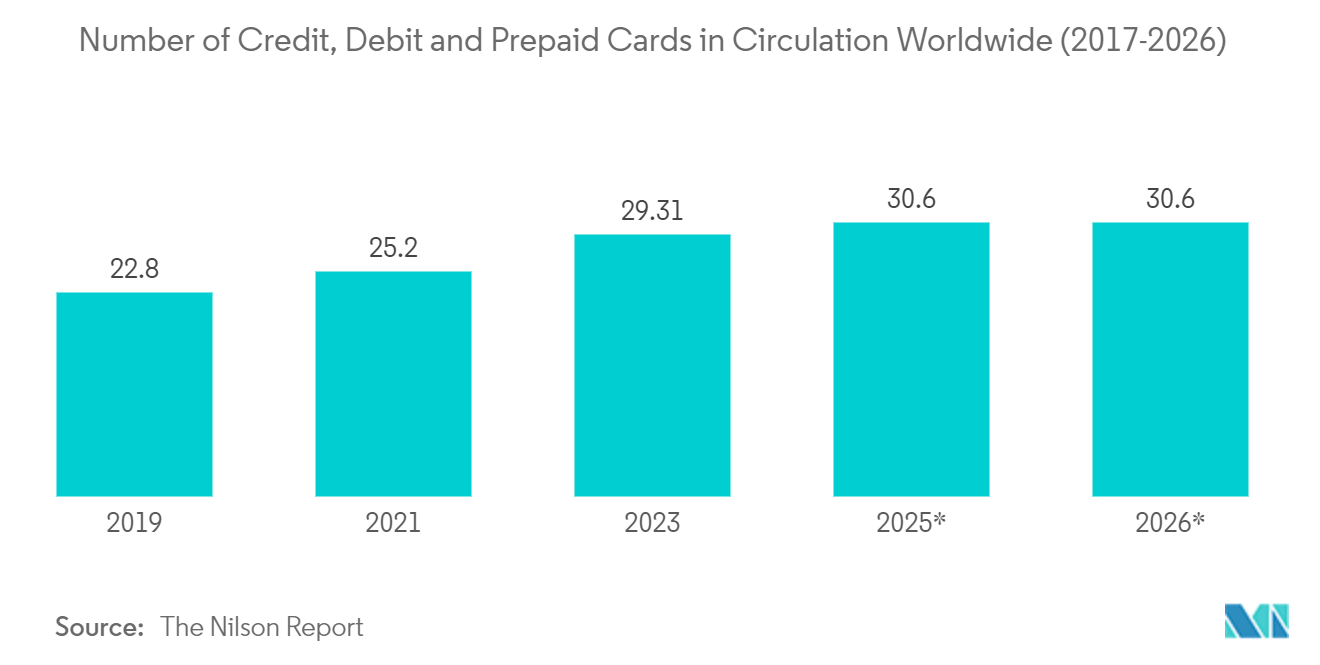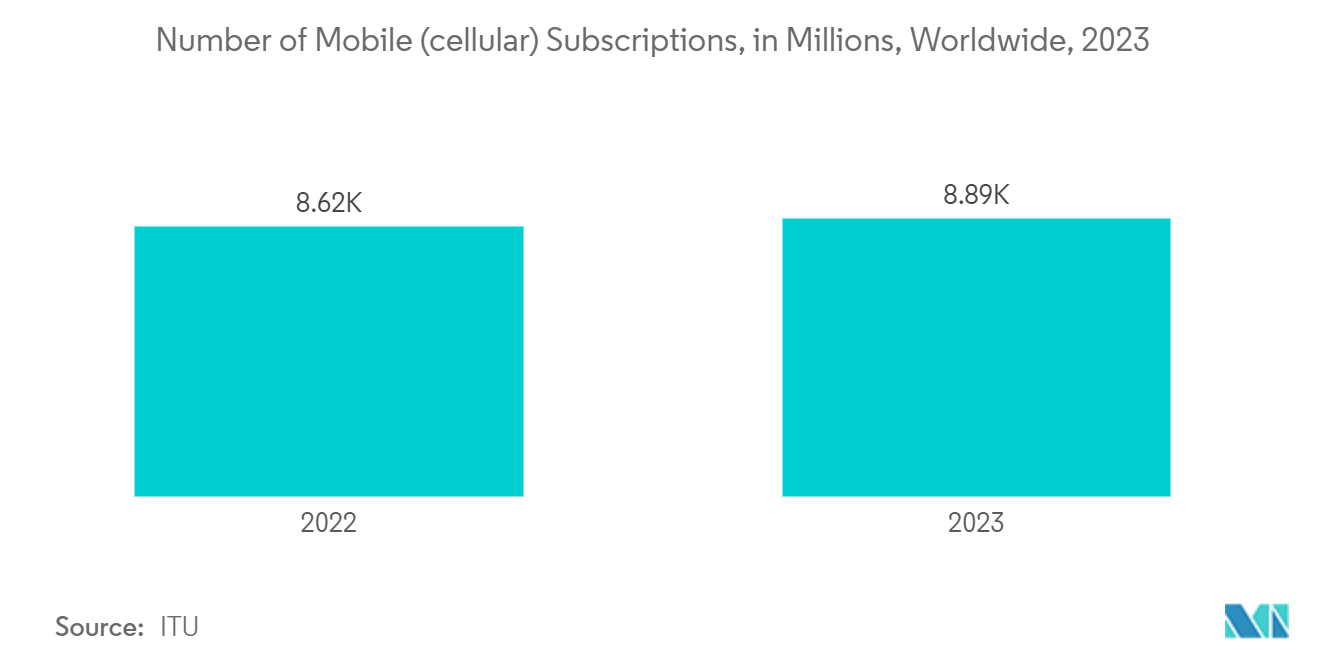Market Trends of MPOS Terminals Industry
Increase in Adoption of Card and Online payment
- The growth of fintech companies and digital-only banks is anticipated to increase competition in the global banking industry and increase the use of debit cards. In the United States, where credit cards are widely used, people in regions such as Latin America, particularly those with lower incomes, have traditionally made payments using cash. In recent years, there has been a transition in these regions as well, and more people are becoming comfortable with using credit cards to make purchases due to growing digital adoption.
- The card-based payments at the point of sale worldwide include debit cards, credit cards, and bank-financing prepaid cards. Over the past few years, card-payment transactions through debit cards and credit cards at the point of sale are gaining popularity in all regions. The growth in card payments at the point of sale is primarily supported by various government initiatives, including the cap on interchange fees and the widespread expansion of POS infrastructure.
- In June 2023, Tap to Pay on iPhone provides an easy, secure, and private way to accept in-person contactless payments at LVMH stores using iPhone - no additional hardware needed. At this year's Viva Technology show, LVMH announced that it would begin rolling out Tap to Pay on iPhone to select LVMH Group stores in the U.S. later this year, offering a seamless and secure payment experience. With Tap to Pay on iPhone, the LVMH Group client advisors can accept Apple Pay, contactless debit and credit cards payments, and various digital wallets in the store simply by using their iPhone and a partner-enabled iOS app - no additional hardware needed, regardless of the purchase amount.
- Additionally, Australia has witnessed an upward swing in the number of EFTPOS terminals in the past two years. An increased number of airports across the country, as it has been proven to be the secure option of payment, it is expected to boost card payment acceptance at the physical stores in the country. For instance, in November 2021, In a movement to boost payments competition in the Digital Economy of Australia, EFTPOS proclaimed that the newest phase of its next-generation digital security technology had gone live with numerous banks in Australia merchants and FinTechs, that included Fat Zebra, Till Payments, as well as EFTEX.
- Further, with the opening of more economic sectors, various POS companies globally are increasing their production to cater to the demand for the POS system at various physical stores. Such development is anticipated to further augment the growth of card-based payments during the study period.

Retail Segment is Projected to Showcase a Significant Growth
- The retail sector is one of the main users of mPOS terminals. The segment is anticipated to hold a noteworthy share globally. The retail segment is gradually picking up with the digitalization of brick-and-mortar stores in different parts of the world. Tech and non-tech-savvy customers are similarly demanding in desiring a smooth transaction experience at their favored retailers.
- The snowballing need for multiple mPOS systems among supermarkets, big retailers, and departmental stores with a vigorous and centralized system has pushed the retail sector's steady development in the mPOS terminal market. Due to its customer mapping application, the augmented emphasis on customer behavior has directed to amplified mPOS adoption.
- Retailers are employing mobile POS software programs to remotely access their establishments and reduce the factors contributing to decreased revenues owing to the non-availability of staff. This gives the owners frequent updates on the work done within retail locations. It also makes tracking and organizing the products in physical and online marketplaces possible. Market leaders have introduced retail POS terminal software compatible with NFC and EMV compliance, enabling customers to make payments more quickly and securely.
- The increasing number of retail stores across regions attracts customers because of the significant concessions and other services. Additionally, the Department of Commerce in the United States has projected the retail revenue to touch about USD 5.35 trillion in the United States itself by 2025. Nevertheless, customer retention has become the principal challenge to sustaining in the market. This competition upsurges the obligation to reinvent their business models to sidestep competition concerning the value and find the balance between investment in the latest technologies and income.
- Furthermore, the digital economy is projected to expand rapidly, in that way creating significant demand. Temasek and Google predict that by the year 2023, online consumer spending across the top 6 economies will witness almost a quarter of a trillion dollars. The rise of e-commerce is fueled by rising disposable incomes, increased internet usage, improved logistical networks, and alternative payment methods.


